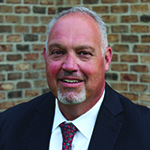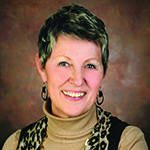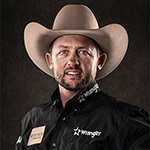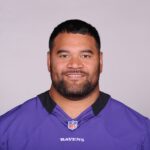HALL OF FAME HONOREES
CLASS OF 2023
Stein Eriksen
Skiing
Official titles that have been ascribed to the late Stein Eriksen include Knight First Class in Norway, Olympic Ambassador in Utah and the “Patriarch of Elegant Skiing” at Deer Valley Resort. Yet those labels only begin to describe a man who was known for his grace on the ski slopes and his graciousness everywhere he went. If one word could capture Stein, it would be “charisma.” He’s one of those people who just had a distinguishable aura, a charm that he exuded with everyone he met. No wonder Deer Valley loved having him as its director of skiing for 35 years- a Norwegian who became synonymous with Utah’s unique snow.
Stein was initially involved in the development and layout of Park City Mountain Resort after moving to Utah in the late 1960s. So it is fitting that he joins Ted Ligety, who grew from a PCMR toddler into an Olympic champion himself, in the Utah Sports Hall of Fame’s Class of 2023.
Utah was blessed to have Stein become an adopted son, after his legendary ski racing exploits on behalf of Norway. He was the gold medalist in the giant slalom in Norway’s 1952 Winter Games in Oslo, then became the first Alpine skier to win three gold medals in the World Championships in 1954 (an achievement Ligety would match in 2013). Stein’s legacy goes even further. By doing flips on the slopes, he essentially created the sport of aerials, now a major component of the Winter Olympics and the focus of World Cup competition at Deer Valley almost annually.
When Stein passed away in 2015 at age 88, Deer Valley President/General Manager Bob Wheaton labeled him “an integral part of the Deer Valley family since the resort’s inception,” crediting him with “infinite” influence in the ski industry. Stein helped Deer Valley founder Edgar Stern fulfill a vision of creating one of the most luxurious ski resorts in the country, and the mid-mountain Stein Eriksen Lodge was named in his honor. His job description was basically “being Stein Eriksen,” and he performed it well. Skiers hoping to spot Stein on the Deer Valley slopes merely needed to check the ski suit on the mannequin of the Bjorn Stova shop run by his wife, Francoise, to see what he was wearing that day. Or, they could approach him at his regular lunch table inside the Glitretind Restaurant.
Stein and Francoise are parents of five children.
Ted Ligety
Skiing
While many Olympic athletes have lived and trained in Park City, Ted Ligety is a genuine Utahn.
He’s a native son who learned to ski at Park City Mountain Resort, starting in a day program that involved activities such as coloring as much as time spent on the slopes. Ted started competing at age 10 and eventually became a two-time Olympic gold medalist and one of the top three giant slalom skiers in history, thanks to a steady climb through the ranks of ski racing in Utah. As one of his Park City coaches, Aaron Atkins, once said, “I use him as an example of somebody who persevered through the tougher times. He wasn’t one of the prodigies.” Ted has remained loyal to his friends, family and home state. Even after his 2006 breakthrough with an Olympic gold medal in the combined (downhill/slalom) event in Italy at age 21, his closest friends remained those who grew up with him on the Park City Ski Team. One friend described as “the same old Ted,” complimenting his humble persona. “I wouldn’t have ever expected to be where I am now,” Ted said at the time.
Ted went on to build some of ski racing’s most impressive credentials, with his 2014 Olympic gold medal in the giant slalom in Russia adding to the context of his career. A lot had happened in those eight years, dramatically raising the expectations for his third Winter Games. After his son convincingly won another gold medal, Bill Ligety said, “I was definitely more nervous than I’ve ever been for a ski race.” “Relief” was Ted’s overriding emotion that day, after he fulfilled the demanding forecasts for his performance. He came through in Russia a year after having become the first male skier in 45 years to win three gold medals in the World Championships. A five-time World Champion in the giant slalom, Ted posted 25 victories in World Cup competition.
Ted’s legacy includes being an entrepreneur and promoter of the sport. He once taped “Mom + Dad” on his ski helmet to thank them as sponsors. By the time he won his second Olympic medal, his helmet proclaimed the “Shred” nickname that symbolized his own line of skiing products.
Always known for his love of skiing, not just racing, Ted retired from competitive skiing in 2021. He and his wife, Mia, are parents of three children and live in Park City.
Dave Rose
Basketball
Dave Rose graduated from high school and college in Texas. Yet a detour to St. George for junior college altered his life’s path almost permanently, making him a Utahn for the last four decades.
What are the odds of this? The two winningest basketball coaches in BYU history each worked his way into that job by coaching at Millard High School and the former Dixie College. Dave followed Stan Watts’s road by coming to Fillmore, Utah, the summer after the University of Houston team he co-captained lost to North Carolina State in an epic NCAA championship game.
BYU credits Dave with a 348-135 (.720) record in 14 seasons, topped only by Watts’ 371 wins. That includes a 43-11 mark vs. instate schools. Dave earned four Mountain West Conference regular-season championships and three Coach of the Year awards. His eight trips to the NCAA Tournament, including six years in a row, are both BYU highs for any coach, and so is his achievement of 13 consecutive appearances in either the NCAA Tournament or the NIT.
Dave’s 2011 team, led by national consensus Player of the Year Jimmer Fredette, became the first BYU squad in 30 years to reach the NCAA’s Sweet 16. He coached four other conference players of the year: Keena Young, Lee Cummard, Tyler Haws and Kyle Collinsworth.
Once an aspiring oil executive, Dave abruptly altered his course after enduring the drudgery of a summer internship in a high-rise office building in downtown Houston. Three years of teaching and coaching three sports in Fillmore shaped him in multiple ways, toughening him to absorb suggestions from mostly well-meaning basketball fans and exposing him to the rivalry with Delta, “which is more pressure than anyone should have to go through,” he once told The Salt Lake Tribune in a series about the first jobs of notable coaches. “Because it was so intense in a small town, I think it prepared me for all this.” Wanting to live someplace bigger, Dave took an assistant’s job at Pine View High School in the St. George area, near the hometown (Santa Clara) of his wife, Cheryl. He then became an assistant coach at the school then called Dixie State College, where he had played basketball and baseball. Dave spent seven years as the junior college’s head basketball coach, compiling a 167-57 record. He then joined Steve Cleveland’s BYU staff in 1997 and took over the program in 2005.
Dave and Cheryl, who have been major advocates of cancer research and families affected by cancer, are parents of three children.
Julie Thompson Seal
Fencing
Julie Thompson Seal planned to play softball for BYU, but her sporting path in Provo changed when she was cut from the team. Her next activity might have become clogging, but the classes were filled.
That’s the back story, via a BYU Magazine interview, of how she became one of the top fencers in the country.
Two dozen sports now are represented in the Utah Sports Hall of Fame. It took more than 50 years for fencing to be included, and Julie’s long, steady climb in the sport made it worth the wait. Through the fencing club she operates in Pleasant Grove and her research related to autism and fencing, Julie has become highly influential in the sport, beyond even her own significant achievements. Julie has claimed 14 national championships, while winning two medals for the United States in the Pan Am Games. She became a senior world champion in the women’s saber event’s Vet-50 category in Croatia in 2022. Julie won four gold medals in the 2019 Can/Am Veterans Cup vs. Canada.
In 2020, in advance of the North American Cup in Salt Lake City, she told USAFencing.org, “It’s an unbelievable gift to me that I will have the opportunity to compete right alongside my children. For us, it’s truly the family business. All five of my kids, my husband and my son-in-law fence.” Grace, a daughter of Julie and Richard, has fenced for Ohio State and Penn State as one of many competitors from the Valkyrie Fencing Club who has gone on to college programs. In national events, Julie’s students have earned 26 gold, 21 silver and 43 bronze medals among the three weapons and have collected three international bronze medals.
Julie is a highly ranked fencing referee, helps run an organization that supports and advocates for women in the sport and has done research into what she describes as the “unexpected mutual benefit” between the sport of fencing and people with autism. She’s one of few women to have earn a Fencing Master degree.
In her three decades of fencing, Julie has developed remarkable perspective of competition, and hopes to convey that philosophy. “The world of competition is often abusive,” she wrote. “It’s the law of the jungle. Sport has become the survival of winners. But maybe we have forgotten that sport is not war. It’s the opposite. Sport is friendship and sacrifice and the pursuit of excellence in all things, including respect for one another.”
Tom Wharton
Sports Writer
One of the many books by Tom Wharton is titled, “It Happened in Utah.” Those four words serve as a summary of Tom’s journalism career, because if it happened or continues to exist in Utah, he knows about it. No wonder Tom himself has been described as “a Utah institution.” While he’s known for having covered every corner of Utah and everything in the middle, whether in high school sports or the outdoors, his influence extends far beyond the state’s borders. He made a lasting impact as president of the Outdoor Writers Association of America, an important group in the sports and tourism industry, and helped host three of the OWAA’s annual conferences in Utah. In 2016, Tom received the OWAA’s J. Hammond Brown Memorial Award for his longtime service to the organization.
A graduate of Granite High School and the University of Utah, Tom got his start with The Salt Lake Tribune by reporting about the state high school basketball tournament as part of a Tribune writing seminar. That experience began a run that likely never will be matched, as Tom covered 50-plus years of high school tournaments. He’ll happily tell you about covering the 1979 NCAA championship game featuring Magic Johnson and Larry Bird, yet he’ll speak just as eagerly about high school title contests such as the 1989 duel between Richfield’s Ryan Cuff and Emery’s Shawn Bradley.
Tom retired from full-time work with The Salt Lake Tribune in 2016 after 45 years on the job, while remaining a contributor to the newspaper. His hallmark is consistency, treating every story with the same degree of interest, while also producing some especially notable work such as a 1991 series about the Great Salt Lake that was nominated for a Pulitzer Prize.
Tom is a storyteller in the greatest sense of that word. He always believed that whatever game or subject he was writing about was very important, and he had a knack for presenting it well. It all goes back to storytelling, and the journalism practice that what you write should reflect what you would tell someone about what happened.
In addition to dozens of OWAA awards, he has been recognized by the National Football Foundation’s Utah Chapter, the University of Utah Communications Department and the Utah Interscholastic Athletic Administrators Association. Most recently, in March, 2023, Tom was inducted into the Utah High School Activities Association Circle of Fame- a distinguished honor held for those having greatly contributed their time and talents to promote the values and principles of that organization.
Wharton spent 21 years in the Utah National Guard, during his newspaper career. He owes his love of the outdoors largely to his late wife, Gayen, a co-author of several books with him. Tom and his wife, Nancy, have a blended family of six children.
CLASS OF 2022

Scott Brumfield
Professional Football League
When this Utah Sports Hall of Fame inductee sustained the knee injury that essentially
ended his NFL career, The Associated Press’ account began: “Popular but unlucky
offensive lineman Scott Brumfield …”
Those labels were fairly accurate in summarizing his six-year tenure with the Cincinnati Bengals, and some other words
also apply.
Tough. Motivated. Courageous. Overachieving. Scott was overlooked by Division I schools after graduating from Spanish Fork High School and went undrafted by the NFL after playing for BYU. He was named to the All-Western Athletic Conference first team in 1992 as the 6-foot-8, 320-pound lineman steadied BYU’s offense amid injuries that led the Cougars to use four starting quarterbacks.
A quarter-century after his NFL career ended, Scott is still considered a success story in Cincinnati. As an undrafted free agent, he made the team in 1993 and appeared in 56 games with 29 starts in five seasons, playing all across the offensive line.
Most impressively, he responded to a spinal cord injury that required relearning how to walk by returning to the field in 1997 and playing in 15 games.
No wonder Bengals owner Mike Brown once said of Scott, “We’re very fond of him. We like him a lot.” And teammate Darrick Brilz said, “He’s a tough guy who fights back.”
Brumfield demonstrated that trait after being temporarily paralyzed during a collision with a teammate while blocking on a running play in a 1996 game at Baltimore. The next week, appearing at a hospital’s news conference in a wheelchair, Scott said, “I’m living a dream right now, playing in the NFL. It’ll take more than that to turn me away.”
Sure enough, he was cleared to play five months later. His comeback made him Cincinnati’s winner of the annual Ed Block Courage Award. One player from each NFL team is voted by their teammates to be honored for their courage and inspiration throughout the season.
After retiring from the NFL, Scott retraced some of his steps in life. He became Spanish Fork’s head football coach for six seasons and then returned to Dixie State, where he had been a two-time junior college All-American and earned membership in the school’s Hall of Fame and the NJCAA Football Hall of Fame. Scott coached the offensive line during the school’s initial transition to NCAA four year status, then took over as head coach for six seasons.
Scott and his wife, Jodi, are parents of four children and live in Salem.

Norma Carr
Sports Administrator
The Utah Sports Hall of Fame Museum is one of the facilities in the Salt Lake Valley that’s a tribute to the pioneering work of Norma Carr, who was the organization’s president when the facility opened.
The Utah Sports Hall of Fame Museum is one of the facilities in the Salt Lake Valley that’s a tribute to the pioneering work of Norma Carr, who was the organization’s president when the facility opened. So it is fitting that Norma is being inducted into the Utah Sports Hall of Fame, especially during the 50-year anniversary of Title IX, the legislation that provided access for girls and women in athletics. She was one of many driving forces that enabled the USHOFF to create its own museum, after nearly 50 years of the organization’s existence.
Best known in the state’s sports scene for her 25-year tenure as Salt Lake Community College’s athletic director, Norma is a symbol of what women can do in athletics, with the platforms they’re given. And, in her case, earned.
Norma was born too soon to benefit from Title IX in her own athletic career at Davis High School and Brigham Young University, even as she pursued five sports in college: softball, basketball, volleyball, tennis and archery.
Even during her tenure as a Davis teacher and coach, she battled for gym access and to have sports such as girls basketball sanctioned by the Utah High School Activities Association.
A protege of the legendary Fern Gardner at the University of Utah, Norma earned a master’s degree from the school and spent 14 years on the campus as a coach in volleyball, softball and basketball.
Among many honors she has received, Norma was named the Administrator of the Year by the National Association of Collegiate Women’s Athletic Administrators and has been inducted into Utah’s Crimson Club Hall of Fame and the Utah High School Activities Association’s Circle of Fame.
Having become Utah’s first female athletic director overseeing college men’s and women’s programs, Norma retired from SLCC in 2014. When she took the AD’s job 25 years earlier, as The Salt Lake Tribune would observe, “The Bruins fielded two basketball teams that played in high school gyms. The athletic department was barely tolerated by the school’s administration. The men’s basketball program was on national probation.”
The picture was much different, a quarter-century later. SLCC built the Lifetime Activities Center, worthy of the NBA’s participation. Norma added women’s volleyball, baseball and softball to the athletic department, with the modernized Cate Field for baseball and what’s now Norma Carr Field for softball. Bruin Athletics became a national power in multiple sports and, perhaps more important, a major part of the fabric of SLCC and the Salt Lake Valley. Norma launched SLCC’s Know Greater Heroes program, bringing positive messages to thousands of elementary school students in assemblies.

David Checketts
Sports Owner and Founder
The short version of Dave Checketts’ professional sports administrative career is that it would not be an exaggeration to say that this state’s two major league franchises, the Utah Jazz and Real Salt Lake, would not exist without him.
His involvement with each franchise represents only a snapshot of his life, yet his influence on either one of them alone would make him worthy of Utah Sports Hall of Fame induction. Even aside from that local impact, it is remarkable enough for someone who grew up loving sports in Bountiful to be placed in charge of the New York Knicks, New York Rangers and St. Louis Blues.
Marveling about his life in New York, he once told the BYU Magazine, “I didn’t grow up in this kind of environment… I wanted to see what could be accomplished if I worked hard. I didn’t know if I’d ever be in the middle of New York City, but it’s been fun and very challenging.”
Describing himself as “a normal, laid-back Utah kid,” Dave reflected, “I had a lot of dreams, but I wasn’t going to do anything spectacular.”
Fair to say, the University of Utah graduate with a BYU master’s degree fulfilled those dreams and exceeded expectations, to the benefit of his home state. Fans who are just becoming acquainted with the Jazz in this century probably can’t imagine the state of the franchise in the early 1980s before Dave came aboard in his late 20s. The team was playing one-fourth of its home schedule in Las Vegas as a desperate financial move and could sell out the 12,000-seat Salt Palace only for marquee opponents. The improvement of the on-court product (Utah Sports Hall of Famers including Frank Layden, John Stockton, Karl Malone and Mark Eaton get some credit here) coincided with Dave’s management acumen, helping the team become a model NBA franchise and attract the ownership interest of Larry H. and Gail Miller, two more Hall of Famers.
In his second act in Utah sports, Dave returned to the state by launching the RSL soccer franchise and building Rio Tinto Stadium. The team won the 2009 MLS Cup championship and reached the finals again in 2013.
Once named among the Top 100 Most Powerful People in Sports, Dave also owned the NHL’s Blues and later became CEO of Legends Hospitality Management, working with the New York Yankees and Dallas Cowboys.
Dave and his wife, Deborah, are parents of six children and live primarily in Connecticut.

Steve Konowalchuk
Professional Hockey League
Steve Konowalchuk is Utah’s first homegrown National Hockey League player, a distinction that only begins to tell the story of his career at the highest level of the sport.
Steve played 14 seasons with the Washington Capitals and the Colorado Avalanche in a total of 790 games in the NHL and skated for U.S. teams in five international tournaments.
Like most elite hockey prospects, Steve moved away from home in his teens to pursue his ambitions in the sport, going to Saskatchewan at age 15 with his older brother, Brian. Yet it is fair to say that his love of hockey and ability were discovered and developed in Salt Lake City. He played locally in the Salt Lake Amateur Hockey Association and traveled regionally with Team Utah.
As he recently told ABC4.com, “It was just such a great time of my life with my brother and some of the guys we played with … a special group of people that I have a lot of memories with.”
Starting when Steve was 12, the brothers also competed in the men’s league at the Cottonwood Heights Recreation Center. They worked as “rink rats” during Salt Lake Golden Eagles games at the Salt Palace and were known to play one-on-one until the early morning hours. Beyond that, Steve said, “My father would get us ice time wherever he could find it.”
Steve was drafted by Washington at age 18 and went on to record 171 goals and 225 assists in the NHL, with three hat tricks. He was known as a solid, two-way player and penalty-killer and was named a two-time captain with the Capitals. When his teammates voted Steve as captain in 2002, coach Bruce Cassidy said, “Kono is certainly qualified and well respected. He leaves nothing on the bench or in the (dressing) room; he goes out and gives it everything he’s got every time.”
Steve’s response was, “For the players to vote you, that means a lot. That’s who you come out and play for, each other. … It’s a nice thing, but it’s just back to work, don’t say anything fancy, go out and do what you do.”
After retiring as a player in 2006, Steve has spent nearly two decades as a coach and scout at various levels of hockey. He’s currently the coach of the Red Deer (Alberta) Rebels of the Western Hockey League. Steve and his wife, Leah, are parents of two college graduates and make their home in the Seattle area.

Cody Wright
Professional Rodeo
As a renowned news magazine, CBS’ “60 Minutes” only occasionally covers sports subjects, but producers found a very compelling story in southern Utah. So did a New York Times writer and author.
Somewhere along the 100,000 miles that rodeo cowboys travel annually, the world has taken notice of Cody Wright and his family in recent years. The “60 Minutes” profile and the book “The Last Cowboys: A Pioneer Family in the New West” have commemorated a legendary career that has led to Cody’s induction into the Utah Sports Hall of Fame. And let’s just say it would be a surprise if he’s the last member of his family to be honored, considering what his sons are doing in the sport. In 2016, Cody became the first rough stock rider to compete with two sons in the same event of the National Finals Rodeo.
Cody won saddle bronc world championships in 2008 and 2010, claimed two titles in the prestigious Calgary Stampede and is a 13-time NFR qualifier. As his career unfolded, he pursued several events, before focusing mainly on three rough stock events: bareback, saddle bronc and bull riding.
As “60 Minutes” reporter Bill Whitaker observed, “You may not have heard of the Wrights before, but at rodeos big and small across the country … that last name is as famous as Manning or Montana.”
Asked what it’s like to ride a bucking bronco for eight seconds, Cody said, “Adrenaline. A little bit of fear. And you gotta learn how to control it.”
Cody was raised primarily in Milford, Utah, as one of 13 children of Bill and Evelyn Wright. There are now eight generations of Wrights who have operated a cattle ranch. Rodeo was a natural by-product of that profession, an extension of the work ethic that Bill Wright modeled.
As Cody said, “Dad’s the first one to preach that you get out of it what you put into it.”
At its core, rodeo is an individual sport. Yet there’s also an element of teamwork, especially when the Wright family is involved in the same event, helping each other into the saddle.
“There’s nobody I’d rather see do better,” Cody said of his sons. “But don’t think I ain’t trying to beat ‘em.”
Cody and his wife, ShaRee, are parents of four sons and a daughter and live in Beaver.
CLASS OF 2021
Jay Don Blake
Professional Golf
St. George native Jay Don Blake is distinguished as one of the best collegiate golfers ever to play in Utah and as the only homegrown Utahn to win a PGA Tour title in a span of several decades.
As a senior professional golfer, Jay Don added three wins to go with his victory in the 1991 PGA Tour event at the famed Torrey Pines Golf Course near San Diego. It would be another 25 years before Tony Finau became the next Utah high school graduate to earn a PGA Tour win. Jay Don set a standard for Finau and other aspiring pro golfers in the state by repeatedly finishing among the top 125 annual money-winners and keeping his PGA Tour card for 15 straight years.
The recent success of Utah golfers Daniel Summerhays, Zac Blair and Finau provides some context to Jay Don Blake’s PGA Tour career, with his remarkable consistency and longevity.
Jay Don forever will be associated with the nine-hole Dixie Red Hills GC, St. George’s original public course. A two-time medalist in the state high school golf tournament, he went on to Utah State and won seven consecutive tournaments as an Aggie junior. In the 1980 NCAA Championship at Columbus, Ohio, he beat future PGA Tour star Hal Sutton in a playoff for medalist honors. Jay Don remains the only Utah college golfer to win an NCAA individual title.
After qualifying for the PGA Tour, Jay Don became a fixture at that level. He made 499 starts on the tour and advanced through the 36-hole cut in more than two-thirds of those tournaments, earning $5.5 million. Jay Don tied for sixth place in the 1992 U.S. Open at Pebble Beach Golf Links and, perhaps more impressively, qualified for the 2013 U.S. Open as the oldest player in the field at age 54.
After turning 50, he launched his PGA Tour Champions career in 2009 and won three tournaments, while earning $5.3 million.
A member of Utah State University’s Hall of Fame and the Utah Golf Hall of Fame, Jay Don recognizes his role in promoting and assisting the next generation of golfers in the state. He’s a co-chairman of the Utah Junior Golf Association and is the namesake of an annual competition between Utah and Nevada.
Jay Don has made southern Utah his home throughout his life, aside from those four college years in Logan. A father of four and a grandfather of ten, he lives with his wife, Marci, in St. George.

Courtney Young Johnson
Olympic Water Polo
Salt Lake City native Courtney Johnson earned a silver medal in the first women’s water polo competition ever staged in the Olympics, representing the United States in 2000 in Sydney, Australia.
A graduate of Skyline High School, where she competed in swimming, water polo and soccer, Courtney played for the University of California’s first women’s varsity water polo team and was named the MVP of the 1996 Collegiate National Championship. The Daily Californian newspaper named her the school’s Female Athlete of the Year after her “All-American” season.
She became part of Olympic history in 2000. As she told Swimming World magazine, “One hope of mine is that people will realize the struggles and sacrifices that it has taken us to get where we are. It’s been a long time coming, but I’m happy we’re getting our shot at the Olympics.”
In Sydney, the U.S. team went 3-1-1 in group play to qualify for the semifinals, then defeated The Netherlands 6-5 before losing to host Australia in the gold medal match.
In addition to her Olympic success, Courtney competed in two World Championships and once scored four goals in an 11-9 win over The Netherlands in the Holiday Cup.
An excellent student, Courtney chose Cal over Ivy League schools Harvard and Brown. She attended law school at Duquesne and Santa Clara, graduating in 2001.
Over the past several decades she has been involved in the administration of sports, dating to her role as an international elite athlete. Most recently she was involved in youth sports as the Executive Director of the California Magic Soccer Club. She also spent time after her playing career working at the collegiate level in the athletic department of Saint Mary’s College, working in compliance. Before and after the Olympics, Courtney worked as a volunteer coach for Stanford, helping the Cardinals win the inaugural NCAA women’s water polo title in 1999. Courtney was a member of the U.S. Water Polo Corporation’s Executive Committee in 2000-04 and was on the U.S. Olympic Committee’s Athletes Advisory Committee from 2000-2008. She then became part of a group that was tasked with making recommendations for improvements of the USOC’s board structure and operations model.
She and her husband, Darren, are parents of four children and have recently moved to Dallas, Texas, where she hopes to continue her involvement in sports administration. The couple were forced to live apart for nearly all of 2000 while Darren worked in Silicon Valley and Courtney trained for the Olympics in southern California. “You do it because it’s a lifelong dream,” Courtney said at the time. “I’ve always wanted to be an Olympic athlete, like the boys watching basketball on TV dreaming of playing in the NBA.”
Haloti Ngata
National Football League
Highland High School graduate Haloti Ngata is in the top tier of NFL players whom the state’s prep football programs have ever produced, judging by his multiple selections to the All-Pro first team and five straight Pro Bowl honors.
Haloti went from the University of Oregon to the Baltimore Ravens as the No. 12 overall draft pick and launched a productive NFL career, earning comparisons to the legendary Merlin Olsen as a defensive lineman from Utah.
Even as a 350-pound nose tackle, Haloti once was judged by teammate Paul Kruger as one of the top three athletes on Baltimore’s Super Bowl-winning team. As Kruger said, Haloti “could move like a running back.”
Those traits can partly be traced to his days as a mainstay of the famed Highland rugby team, as he was known to run with the ball. Asked what that experience must have been like for opponents, Haloti told The Salt Lake Tribune, “I don’t think they liked it as much, but I loved it.”
While playing in 180 games for Baltimore, Detroit and Philadelphia during his 13-year NFL career, Haloti established himself as a team leader and an admired figure in the Polynesian community. His perseverance enabled him to deal with losing both of his parents during his college years and extend his family’s legacy.
Clarence Brooks, Baltimore’s defensive line coach, once described Haloti’s aura in the locker room by saying, “Everyone on the team, from Ray Lewis on down to whoever the last guy on the practice squad is, they all gravitate to this guy.”
Will Tukuafu, another NFL player from Salt Lake City, said of Haloti, “He’s a huge inspiration, not only to myself, but to the Polynesian community. The thing I admire about him is with all the fame and wealth and whatever, he’s still the same guy.”
The job description of an NFL nose tackle is not built around individual statistics, yet Haloti posted three consecutive seasons with five sacks. He’s well remembered in Baltimore as a key member of the 2012 Super Bowl championship team. In one compilation that season, he was ranked as the No. 9 player in the entire NFL.
Haloti was voted into the Polynesian Hall of Fame in his first year of eligibility and earned induction into the Ravens’ Ring of Honor in 2020. Haloti and his wife, Christina, are parents of three children.

Nicholas Rimando
Professional Soccer
California native Nick Rimando became a face of Utah’s Major League Soccer team and is acclaimed as the best goalkeeper in MLS history.
Nicknamed the “Wall of the Wasatch,” Nick joined Real Salt Lake in 2007, during the team’s third season. By the time he retired in 2019, he had helped deliver an MLS Cup championship and represented RSL as a member of the U.S. Men’s National Team.
Nick also became a genuine Utahn, involved in community activities. “This is home for me,” he told The Salt Lake Tribune near the end of his playing career. “I’ve come to love this state.”
Growing up in Southern California, where he later would play for UCLA, Nick quickly developed a love of soccer. “Not in the house. Not in the house,” his mother, Rose, often would have to remind him. Yet his father, Marcus, was prescient enough to suggest the game “may make a future for him.”
That proved true during Nick’s two-decade tenure in MLS, with a long list of highlights and memories that resonated with him. As he told The Tribune, “There’s not just one moment” that stands above the rest. There can’t be one moment, in 20 years.”
Any list would have to start with his 2005 championship with D.C. United and his 2009 title with RSL. The state’s first major league championship since the Utah Stars’ ABA title in 1971 came via an overtime defeat of David Beckham and the L.A. Galaxy in Seattle. Nick also led Real to the final match of the 2013 MLS Cup before the team lost to host Kansas City in another overtime contest decided by penalty kicks.
Nick set multiple MLS goalkeeping records that may never be broken, notably … Along the way, he established himself as a team leader and a popular teammate, known for his “annoying little pranks” and upbeat attitude. “Nick has a tremendous amount of life in him,” RSL teammate Tony Beltran once said. “It’s infectious to be around people like that.”
After his last match, an October 2019 playoff loss at Seattle, Nick said, “I gave so much to this sport. … I’m grateful for everything it’s given me.” He may have been undersized for a professional goalkeeper at 5-feet-9, but Nick is a larger-than-life figure in the growth of MLS and the aura of RSL. Nick currently lives in Salt Lake City and is the father of a son and daughter who have grown up in Utah.
Teri Okelberry Spiers
All-American Track & Field
A graduate of Weber High School and Weber State University, Teri Spiers starred as a collegiate athlete in the unusual combination of volleyball and track and field.
The former Teri Okelberry claimed a total of 14 individual and team state championships as a three-sport athlete at Weber High. She was a member of three straight title-winning teams in the mile relay and medley relay events and was an all-state selection in basketball.
Teri was influenced by WHS track coach Jan Keim, once explaining, “I remember walking out to the first practice and it kind of scared me, but I quickly learned that even though she was so intense, she was always striving to make people better.”
Having once planned to play college softball for another school, Teri chose the hometown Weber State.
Initially awarded a track and field scholarship to WSU, Teri walked on to the volleyball team and became a four-year starter, resulting in a combined scholarship. She helped the Wildcats win a Big Sky Conference volleyball championship, although track and field would serve as her primary sport of success.
A story in the Deseret News once described how meet officials would move up when she prepared to compete in her specialty, “not expecting a 120-pound woman to throw the javelin so far.”
Teri won the javelin throw in the Big Sky meet for three straight years, while also finishing in the top 10 in the NCAA meet, earning a distinction of three-time All-American. She was the school’s longtime record-holder in the heptathlon, the triple jump and the 400 hurdles and still claims the WSU record for the javelin, more than 30 years later. She was inducted into the Weber State Hall of Fame in 2001, being recognized as the first Wildcat female athlete to compete in the NCAA Championship in two sports in the same year.
Teri narrowly missed qualifying for the 1988 U.S. Olympic team in the javelin, as her best effort was 6 inches short of the No. 3 qualifier’s mark. She came out of retirement to make another attempt at the Olympics, settling for the honor of carrying the Olympic torch in Ogden on its way to Atlanta in 1996.
Teri has worked extensively in secondary education in the Ogden area, starting as a teacher at Roy High School. She moved into counseling at North Ogden Junior High and Weber High, worked as an assistant principal at Roy, Weber and Bonneville High Schools and is currently principal at South Ogden Junior High School.
Teri is the mother of Bailie Clark and lives in Farmington.
CLASS OF 2020
Due to the COVID-19 Heath Restrictions, a Hall of Fame Induction Banquet was not held in 2020.








